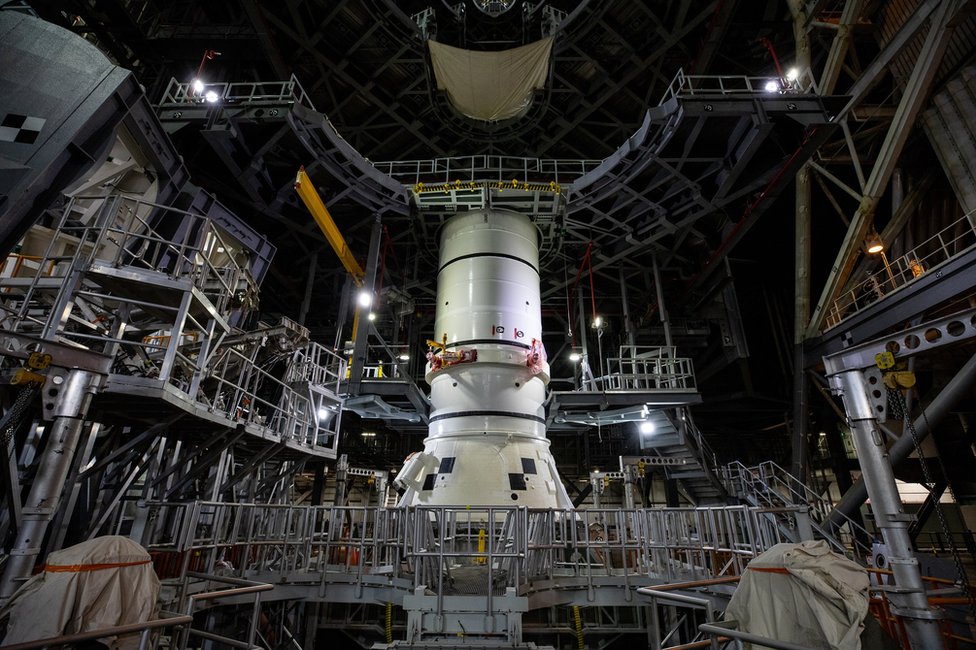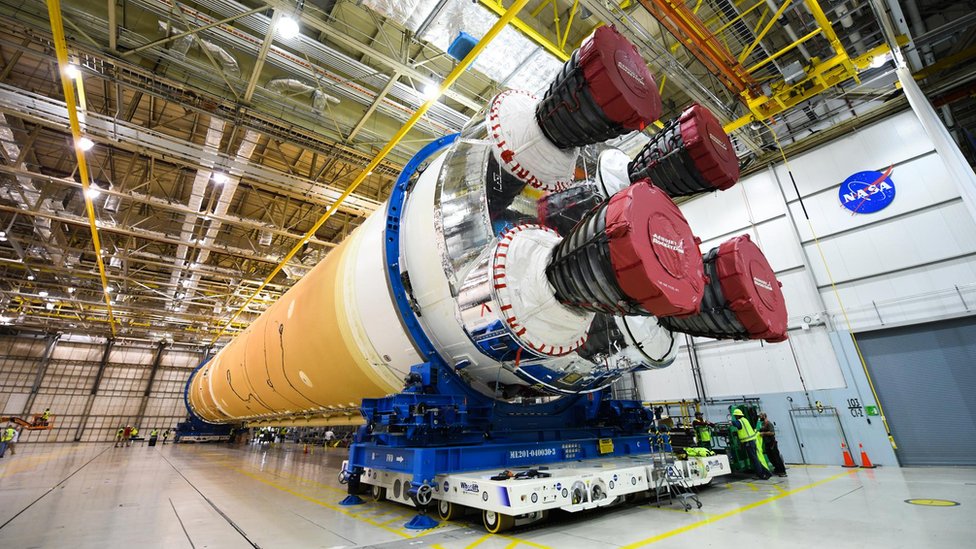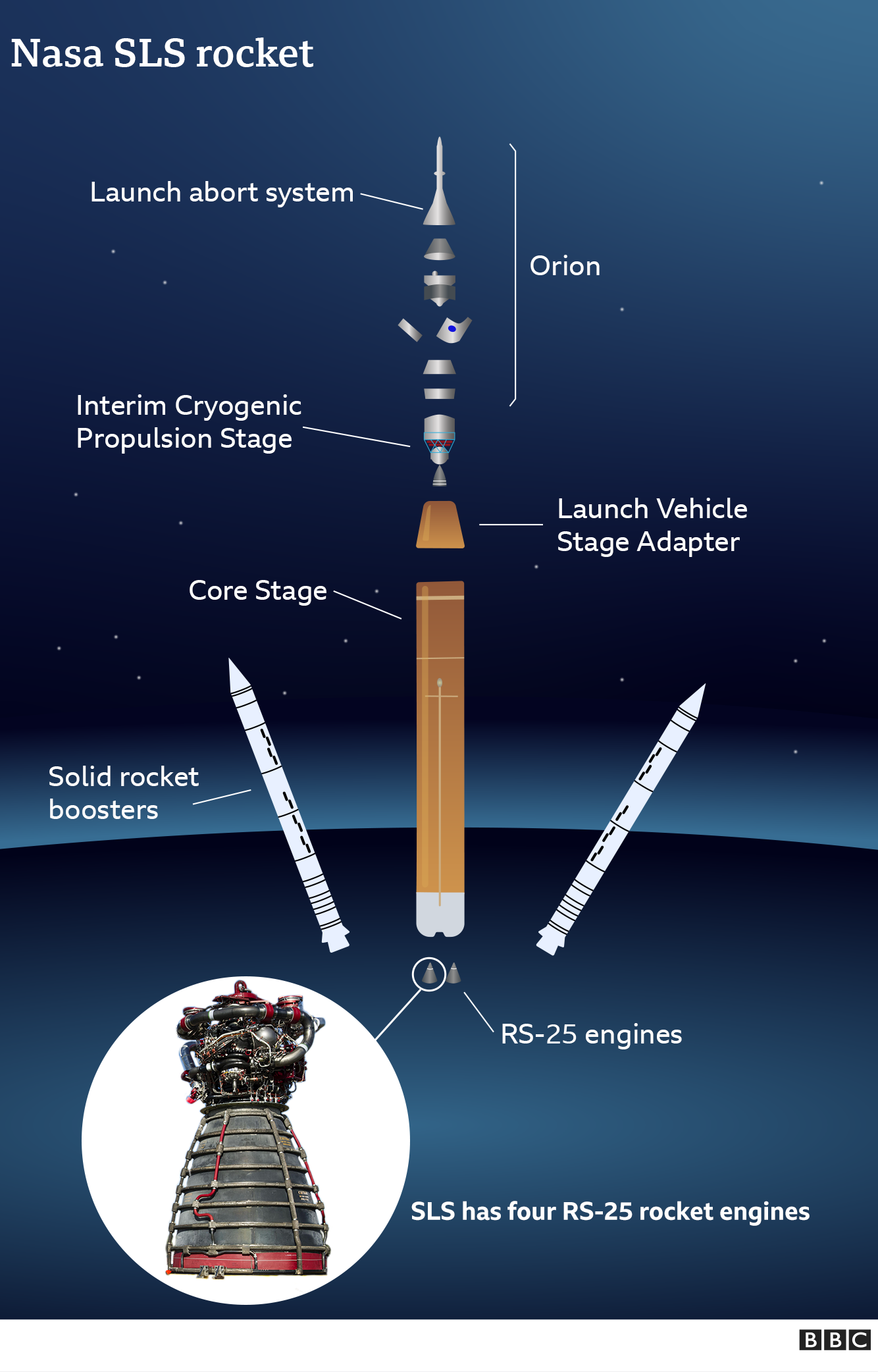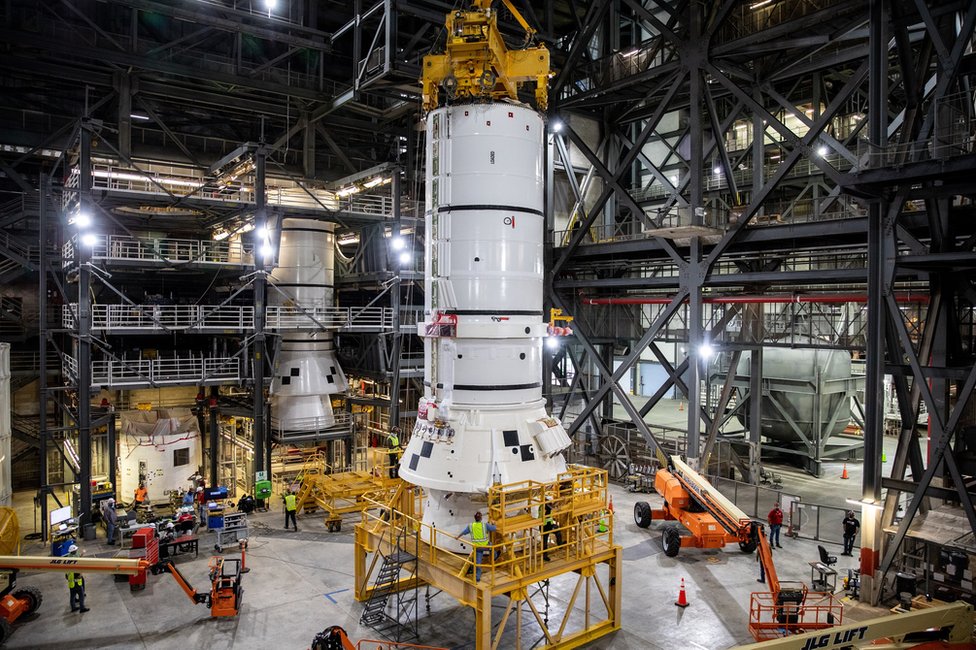
image copyrightNASA/Cory Huston
Nasa has started assembling the first Space Launch System (SLS) rocket on a launch platform ahead of its maiden flight next year.
The SLS is the giant rocket that will send US astronauts back to the Moon this decade – with the first crewed landing targeted for 2024.
The rocket is scheduled to make its maiden flight in November 2021.
The SLS consists of a giant, 65m (212ft) – long core stage with four engines that’s flanked by the twin solid fuel boosters.
Together, these produce a massive 8.8 million pounds of thrust that can loft astronauts into orbit; the rocket subsequently hurls them towards the Moon.

image copyrightNASA
Teams at Nasa’s Kennedy Space Center in Florida lowered the first of 10 booster segments into place on a structure known as the mobile launcher on 21 November. The process is taking place inside the iconic Vehicle Assembly Building (VAB) at Kennedy.
The boosters will burn six tonnes of solid, aluminium-based propellant each second when the SLS launches. They provide 75% of the vehicle’s thrust at lift-off.
The mobile launcher they’re being stacked on is a 115m (380ft) -tall structure that’s used to process and assemble the SLS before moving it to the launch pad.

It’s a huge symbolic step, not only for the SLS – which has been under development for a decade – but also Nasa’s plan to send the next man and the first woman to the lunar surface by 2024, known as Artemis.
“Stacking the first piece of the SLS rocket on the mobile launcher marks a major milestone for the Artemis programme,” said Andrew Shroble, a manager with Jacobs engineering group which is working on the rocket for Nasa.
“It shows the mission is truly taking shape and will soon head to the launch pad.”

image copyrightNASA/Kim Shiflett
The other big segment of the SLS – its orange foam-covered core stage – is currently undergoing a programme of tests called the Green Run at Nasa’s Stennis Space Center in Mississippi.
The final two Green Run tests – which consist of loading the huge stage with propellant and, two weeks later, firing its four engines to simulate a launch and ascent – are set to take place in the next few weeks.
Once it’s fully assembled, the SLS rocket will stand taller than the Statue of Liberty and have about 15% more maximum thrust at lift-off than the Saturn V rocket used to launch the Apollo missions to the Moon in the 1960s and 70s.
The booster segments being assembled in Florida will launch Nasa’s next-generation astronaut vehicle, Orion, on a loop around the Moon in November next year.
Orion will not be carrying any crew on that mission, known as Artemis-1. It will be used to check out the vehicle’s performance before humans are allowed onboard for the Artemis-2 mission, currently scheduled for 2023.
This will be followed in 2024 by Artemis-3, the first crewed landing on the lunar surface since Apollo 17 in 1972.
Follow Paul on Twitter.
Read MoreFeedzy


